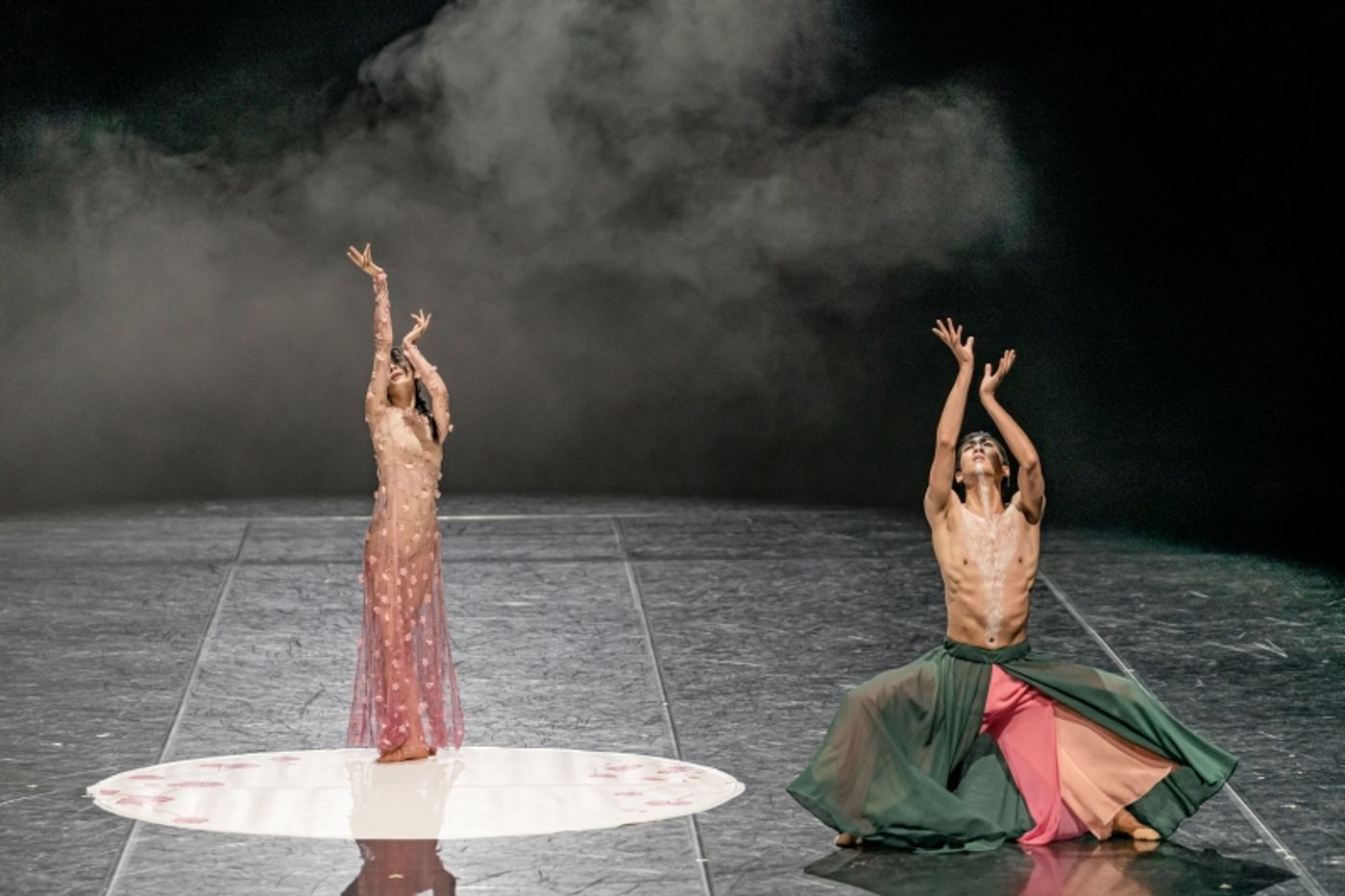Review: INTERNATIONAL DRAFT WORKS, Royal Opera House
Where is ballet (as we know it) going…?

![]()
International Draft Works presented at the Royal Opera House’s Linbury Theatre is a choreographic platform to showcase the upcoming creative talent of the Royal Ballet and its international peers. The programme hopes to allow the audience an insight into “ballet’s choreographic landscape and…how the art form is [currently] evolving throughout the world.”
The evening includes ten works and the premise is an important, and pressing one: where is ballet (as we know it) going…?
In the first half I'd propose there's one serious contender out of the possible five, and that's the Royal Ballet’s current choreographer in residence Joseph Toonga. His piece New Work offers exactly what the title suggests. A creative using a set of existing principles in an innovative way.
The overall feel is one of neutral simplicity, but within this a language dense with impact and bound physicality. The choice of costuming also suggests modernity, as the bodies aren't on perverse display, but still read clearly enough for one to engage with the vernacular. I also love the choice of music by Philip Glass, as it acts as a backdrop to where Toonga wants to take the attention; to the movement. His Royal Ballet tenure is clearly paying off, though I look forward to more exploration of lyricism, phrasing and use of danse d’ecole connecting steps. And I will also say it's a big shame his piece didn't make it to the main stage for the Festival of New Choreography bill.
Elsewhere we had the Korean National Ballet in Youngcheol Lee’s Season; Spring which has super live music and song from Bora Ju but choreographically feels predictable and dated, though only created in 2019.
Two people in love never shake hands by Nicola Wills of Opera Ballet Flanders is what one's come to expect from mainland Europe’s general take on ballet’s future: contemporary dance in socks. The partner work is intricate and well executed but the content doesn't feel new or emotionally substantial.
Act naturally by Barbora Rašková from National Theatre Brno is a goofy yet skilled take on comedic dance which reads too literally to be taken seriously. I'm happy/I'm sad is the name of the game.
Ignored but not withstood by Olmo Verbeeck Martínez of Semperoper Dresden should be recognised for its balletic framework; pointe shoes etc, as well as the evident narrative production structure, but his overall language needs some serious maturing time and intensely critical feedback.
The second half was stronger overall, but equally frustrating.
Opening was Andromedae by Lucas Lima from Norwegian National Ballet. Lima uses Samuel Barber's "Adagio for strings" which is too well known IMHO, and the melodramatic pas de deux, though sophisticated, lacks flow and emotional depth in execution.
Next follows Tetra by Lachlan Monaghan from Birmingham Royal Ballet which is rather a confused piece. Monaghan's language is brimming with dynamic but the work's structure verges on the hysterical. If this was a conscious decision, then fine, but I don't think it is. His dancers cope well with the demanding partnering, but at times it feels more tussle than slick.
Moonlight by Florent Melac of the Paris Opera Ballet acts as a soothing antidote, feeling très beige in all the right ways. Melac creates modern work that includes vivid form but lacks the understanding of the power of stillness. The closing phrase, one of dual spherical patterning is something to absolutely explore further.

Photo Credit: Son Jail
Liminal goodbye by Madeline Squire from Scottish Ballet is an interesting vehicle for the dancer Marge Henrick who offers intriguingly constrained floorwork during the opening section. When she's joined by two male counterparts things feel less relevant, but the liminal quality of continuity remains for the duration of the piece and beyond.
Closing the evening is another success for the Royal Ballet. This time To & fro by Matthew Ball. Again the title can be clearly read within the choreographic language, with Ball and Mayara Magri using an ebb and flow style phrasing to communicate poignant depth of emotion. The content isn’t groundbreaking, but Ball presents some tastefully dramatic lift work, and both dancers embody performances of understated power, like the movement itself. The music: "Notturno" by Ottorino Respighi, performed live by Michael Pansters, undoubtedly supports the piece's overall impact.
The choreographers have feedback sessions next week with “industry professionals” - and I presume there's some topical discussions to be had. So where are we with ballet’s choreographic landscape evolution? Considering we're only in the artform's sixth century it's still quite early days, and former titans have both defined the past and cursed the possible creative future with their greatness in many ways. My advice is: be brave, don't take the easy route, if you've seen it before; assume an immediate different direction, and don't think everything has to be contemporary in order to be modern. Classical frameworks can indeed be revelatory.
International Draft Works runs at the Royal Opera House, Linbury Theatre until April 13.
Main Photo Credit: Opera Ballet Flanders
Reader Reviews
Videos

